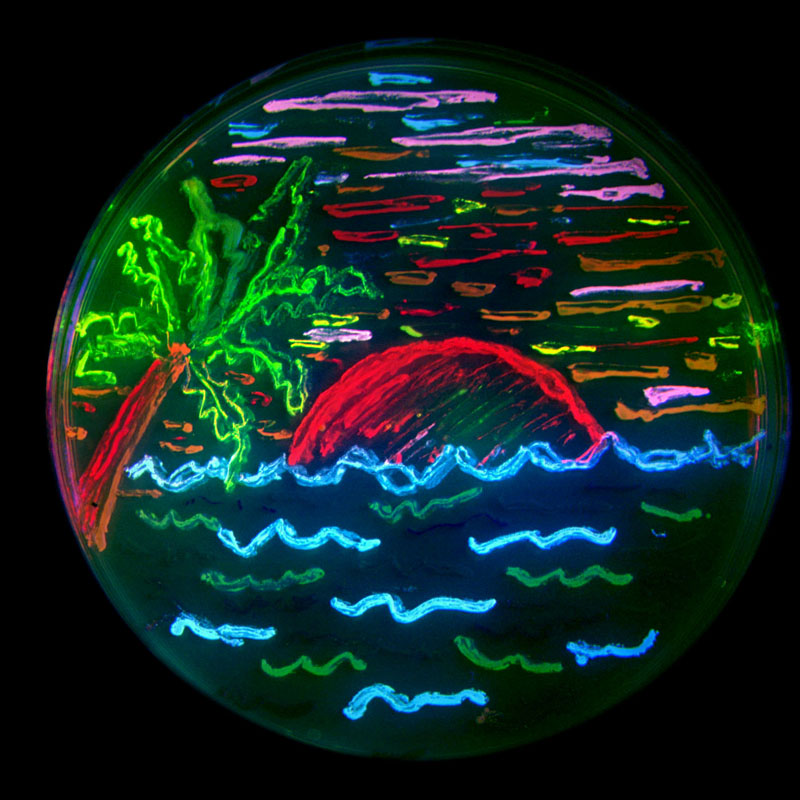Glowing Bacteria Make a Pretty Postcard

This Research in Action article was provided to LiveScience in partnership with the National Science Foundation.
This tropical scene looks like it could grace the front of a postcard from Key West. It's actually a dish full of bacteria — genetically engineered glowing bacteria, that is.
The bacteria in the dish contain the genetic instructions to produce one of eight different fluorescent proteins, all created in Roger Tsien's lab at the University of California, San Diego.
The glowing proteins aren't just pretty to look at; they're a key tool in biomedicine. The bacteria are used illuminate a myriad of experiments including how cancer cells spread, how HIV proteins infect other cells and how insulin-producing cells in the pancreas are made.
It came from the ocean
The out-of-this-world glowing literally rose from the oceans: Fishermen and marine biologists have long known that some jellyfish naturally emit a glowing green halo of light. Called bioluminescence, this phenomenon helps them ward off predators and attract mates.
In the 1960s, researchers caught and dissected some 10,000 jellyfish to identify the compound, eventually named green fluorescent protein (GFP), responsible for their glow. GFP works by absorbing energy from blue light in the environment and reemitting the energy as a green glow.
Sign up for the Live Science daily newsletter now
Get the world’s most fascinating discoveries delivered straight to your inbox.
Once scientists cloned the gene that carries instructions to make GFP in 1992, it became possible to slip that gene into the cells of completely different creatures, using viruses or special chemicals as delivery devices.
Building a glowing rainbow
Scientists also could make differently colored fluorescent proteins by introducing mutations to GFP. Some mutations simply make GFP shine brighter green. Others change the way the protein's light-emitting core forms, causing it to glow in hues like blue or yellow. (Some glowing protein colors, like pink and orange, are derived from a related fluorescent protein that glows red and is found naturally in certain corals.)
Like a spotlight, attaching these "glow-in-the-dark" tags to other molecules allows researchers to track where the molecules are and when they get turned on, like a GPS tracker. Using a variety of colored tags, like those in Tsien's postcard-like dish, makes it possible to track and differentiate between several types of molecules at the same time.
In 2008, Tsien shared the Nobel Prize in chemistry with Osamu Shimomura of the Marine Biology Laboratory and Martin Chalfie of Columbia University for their discovery and development of GFP and its related proteins. Tsien's subsequent work has produced fluorescent proteins that glow longer and brighter.
This research was supported by the National Institutes of Health. To see more cool images and videos of basic biomedical research in action, visit The Biomedical Beat Cool Image Gallery.
Any opinions, findings, and conclusions or recommendations expressed in this material are those of the author and do not necessarily reflect the views of the National Science Foundation. See the Research in Action archive.











